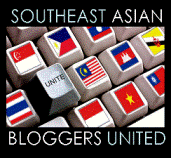When 15 young men left the Philippines 100 years ago to work in the plantations in Hawaii, little did they know that what they did was to start the journey of the Global Filipino. Known as "sacadas" (migrant farm workers), all they wanted to do was to make a living and send home their earnings to support their families.
Prior to the arrival of the "sacadas," most of the farm workers in Hawaii were Chinese, Japanese, Koreans, and Portuguese. However, with the passage of the xenophobic Chinese Exclusion Act in 1882, the supply of farm workers dwindled. When the Philippines was ceded by Spain to the United States for $20,000,000 in 1898, the plantation owners saw the former Las Islas Filipinas as a new source of farm workers.
Satisfied with the industriousness and traits of the 15 Ilocano "sacadas," the demand for Filipino farm workers increased. Ilocano and Visayan "sacadas" were recruited. By 1931, there were 115,000 "sacadas" in Hawaii. Today, the State of Hawaii boasts of 270,000 Filipinos comprising almost a quarter of the state's population.
Within a year of the arrival of the first batch of "sacadas" in Hawaii in 1906, the First Wave of Filipinos started to arrive in Hawaii and the US mainland, mostly in California. Filipinos also trekked to the canneries of Alaska. In addition to the farm workers, young Filipino students and scholars, supported by the Pensionado Act of 1903, studied in American universities. More than 14,000 "pensionados" graduated from prestigious American universities such as Harvard, Stanford, and Cornell. Most of the "pensionados" -- many of which took up Law and Engineering -- went back to the Philippines after they earned their degrees and served in key positions in the Philippine Commonwealth government. They became the role models for local university graduates who were motivated to serve their government which at that time signified the epitome of their careers. Some of the "pensionados" even ran for political offices. They became the new "ilustrados" of the American "Hollywood" Era.
When World War II started, thousands of the migrant Filipinos in America -- then known as the "manongs" -- joined the US army and became part of the US liberation forces. Since most of the "manongs" were unmarried due to the scarcity of Filipinas in the US and the ban on interracial marriages by the anti-miscegenation laws of California and several other states, they took advantage of their "homecoming." They did not waste any time looking for brides to bring back with them to America.
After the Philippines gained its independence in 1946, immigration trickled down to 50 a year, a number imposed by US immigration reforms enacted to control the influx of immigrants from certain countries. However, a lot of Filipinos who served in the US armed forces were granted American citizenship. Thus, the Second Wave of Filipino immigrants began. In addition, the US Navy started recruiting Filipinos as stewards. A lot of them were assigned to the White House serving all the presidents from the time of President Truman. Today, the Chief Cook in the White House is a Filipina.
In 1965, the US Congress passed the Immigration Act of 1965 which increased the immigration quota to 20,000 per year per country. The new law gave preference to professionals and relatives of American citizens. The Third Wave of Filipino immigrants began to arrive.
In the 1970s, Middle Eastern countries with their "petrodollars," started recruiting skilled workers from other countries. Thus, the "Overseas Filipino Worker" (OFW) was born. Mostly equipped with a college degree or technical skill and the ability to communicate in English, thousands of OFWs sought employment in the oil fields of the Middle East.
Consequently, employment opportunities were found in other countries as well. The reputation of Filipinos as industrious, efficient, and literate in English became the OFWs' ticket to job opportunities in more than 100 countries. Today, 3,500 Filipinos leave each day for overseas job placements.
The economic impact of the 8.1 million OFWs is the bedrock of the Philippines' financial stability. Recently, the Philippine government announced that from January through October 2005, remittances from overseas Filipinos totaled $8.83 billion which included $5.32 billion from the US. This amount did not include money sent by other means outside of Philippine banks. It is estimated that the total amount of remittances is more than $21 billion per year.
A century after the "Filipino Diaspora" began, a global Filipino nation emerged. The Philippines' borders are now just imaginary lines demarcating the country's political boundaries. However, a borderless Global Filipino nation has superimposed itself on Earth. With the passage of the Philippines' Dual Citizenship Law, overseas Filipinos can now retain their Filipino citizenship.
With the advent of globalization, the Filipinos have become the most competitive labor group among nations. Other countries -- e.g., China and India -- are now preparing their citizens to compete in the global labor market by encouraging them to learn English as a second language. It is ironic, however, that the Philippines -- whose immersion in English has been its best advantage in the global labor market -- is heading towards changing its medium of instruction from English to the Tagalog-based Filipino.
There is even a small group of Filipinos who want to preserve the indigenous languages by using them as the medium of instruction in their respective regions. But what good would it be if Filipinos become proficient in their indigenous language and lose their ability to communicate in the global community? How could they compete in the global labor market without any knowledge of English, the universal lingua franca?
Filipinos should not lose sight of the fact that the 8.1 million overseas Filipinos in more than 100 countries in the world are the ones who are fueling the Philippine economy with their "Pinoydollars." The Philippine government should make all efforts to prepare its citizens for competitiveness and job placements not only within its territorial boundaries but in every country in the world. After all, the Number One beneficiary is our "Inang Bayan," Filipinas.
from Perryscope
Sunday, November 11, 2007
Thursday, November 8, 2007
this woman made me think

I realized how tired I am when I saw this woman having a respite under the Dita tree at Virac downtown. At that moment, I want to sit beside her to get at least a brief interval of rest and be just an spectator of the hustle and bustle of the busy downtown. I did not. I was in a hurry.
Aren't we always in a hurry for something? We are constantly on the run, always wanting to be at pace with the pack, and sometimes wanting to be ahead in this marathon called life. We are always busy that we forget to pause for a moment and reflect if the things that keep us running all day give us a deeper sense of satisfaction and joy. Are we running towards the right direction?
I am glad I took this picture. This will be my constant reminder to give myself a timeout and rethink how I can move forward again without the pervading sense of urgency surrounding me. Maybe next time, you will see me sitting under that Dita tree.
Saturday, November 3, 2007
You Can Read!
I never really realized how much a part I already am of the blogging world until I saw Empress Maruja's message on my cbox tonight.
My very-popular-blogger-friend-slash-college-theater-guild-batchmate is starting his own monthly blog awards which he billed as "Pinoy Blog Superstar".
And in its maiden voyage, Can't You Read has been chosen as one of the nominees.
It brings me (walang kiyeme) so much pride to be nominated alongside my blogging idols like Misterhubs and Mandaya Moore-Orlis --- two of the very few bloggers that inspire me to be dedicated to my blog and at the same time, make me feel insecure about it as well. Sometimes lang naman. And it's the positive kind of insecurity --- that which propels one to strive to be better at what he does.
The nomination in itself is an honor. But I'd be happier if I bag the award. So vote for me. I know my fellow contenders are better writers, funnier, and more opiniated than I am. But this is my first time, so please... ipagpaubaya nyo na sa kin ang beginner's luck!
(Dan, ito ba yung tinatawag mong "appeal to pity"?)
Again, thank you, Empresss Maruja for this. And thanks also to my few readers who never get tired of reading the not-so-very-extraordinary life that I have and blog about.
I love you all!
To vote, leave a comment on Empress Maruja's site.
Subscribe to:
Posts (Atom)





